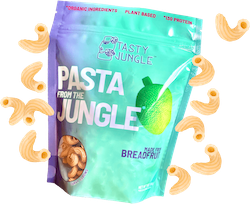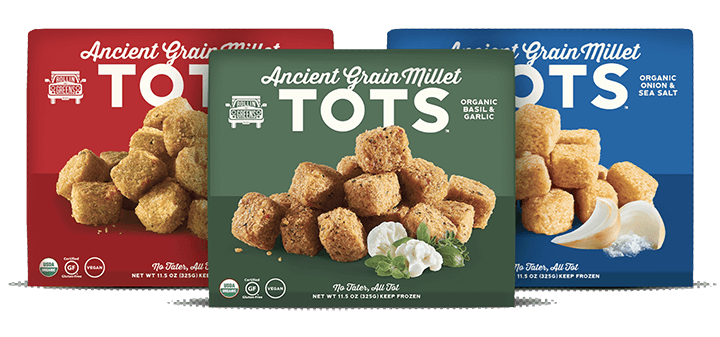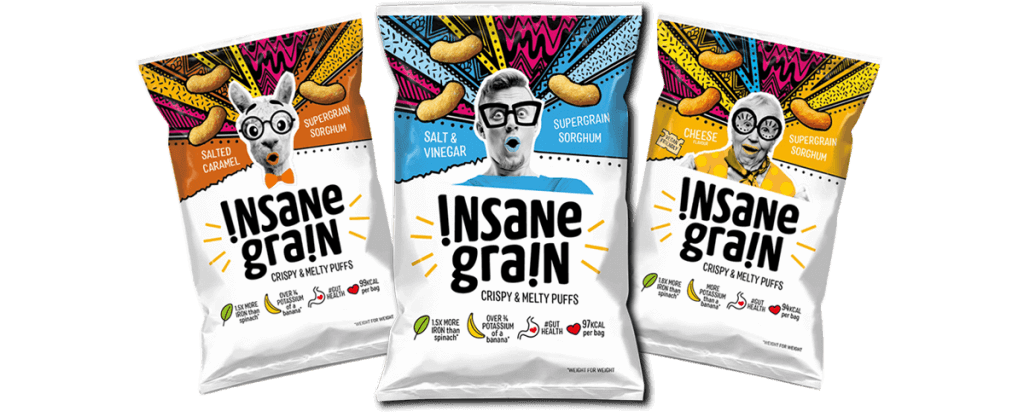
With the new year upon us, I thought we could take a quick peek into what we, at Spoonshot, expect the future to hold, starting with a few interesting ingredient trends to watch out for in 2022. These ingredients offer benefits not just linked to nutrition and functional benefits, but also in the realm of sustainability – all packaged in innovative and convenient formats.
Here’s the full list of the top ingredient trends to watch out for in 2022
Breadfruit
New research into breadfruit, a staple crop found in tropical regions, puts it squarely in the next major superfood category. The studies have shown that breadfruit has a low glycemic index, significant protein, and fiber content, as well as decent quantities of a number of micronutrients. It is also easier to digest than wheat protein.
Breadfruit is quite versatile – it can be eaten ripe as a fruit, cooked in both ripe and unripe stages, and be made into a gluten-free flour. Our data shows that consumer interest in breadfruit grew by over 53% during the last 12 months, and it is expected to grow by 43% in the coming year.
Breadfruit is not a very well-known fruit in many Western markets, but the growing demand for gluten-free food and plant-based protein is definitely an opportunity to tap into. To top it all, breadfruit is a more sustainable crop than potatoes, wheat, and cassava.
In specialty retail, breadfruit has been found on shelves primarily as flour, but the scope for it to be incorporated into new formats is huge, such as pasta.

Must Read: 5 Reasons To Use Food & Beverage Analytics
Melatonin
This is not a new trendy ingredient and has been available for a while in supplement format to help jetlagged travelers or insomniacs get some shuteye. It’s now starting to appear in functional beverages to address the growing demand for “anti-energy” products to help consumers relax and unwind.
But what renewed our interest in melatonin is new research from the Cleveland Clinic that found people taking melatonin were 29% less likely to test positive for COVID-19; African Americans were 52% less likely to test positive.
This connection was established through big data analytics in food industry used to speed up finding potential treatments by repurposing existing drugs (download our white paper on how this can be applied to food and ingredients). Other studies have pointed to the importance of sleep and its role in calibrating the immune system.
Consumer interest in melatonin went up 27% over the last year, and we expect this news to further increase interest in the coming year, since – let’s face it – many of us are not going to be at the front of the line to get the vaccine.

Also Read: Food Trend Prediction 2022 | Nutrition Trends
Millets
Interest in ancient grains will see an uptick in the coming year as consumers look to regain healthier and more sustainable eating habits. Millets in particular will gain some ground, expanding beyond their reputation as a poor man’s staple in Africa and Asia or animal feed to a more nutritious and climate-friendly option to rice or wheat.
Millets are rich in protein, dietary fiber, B vitamins, calcium, iron, potassium, zinc, magnesium, and good fats. They are also highly resilient crops, with the ability to be grown in different climates, even under harsh and arid conditions with limited water.

Millets are finding their way into everyday foods, right from the grain format to bread, snacks, and even baby food and beer. Rollin Greens, for example, uses organic millets in its tater tots in place of potatoes, while Insane Grain has a range of sorghum-based puffed snacks. Interestingly, Colorado is the largest millet producer in the US.
Spoonshot data predicts a 25% growth in interest in millets in the coming year. The UN is likely to designate 2023 as the International Year of the Millet, so expect to see a lot more innovation with millets.
Cascara
Interest in upcycled food, still a pretty niche segment, has grown by 254% since 2018, according to Spoonshot data, and is going to register significant traction in the year 2021-22. Companies will be looking to cut down the amount of waste they generate as well as extract the most value from byproducts.
One of the ingredients we expect to benefit from the growing interest in upcycled food is cascara or coffee cherry, the fruit of the coffee bean. Some estimates suggest that up to 80% of the coffee crop is wasted, almost all of it is cascara. However, this fruit is highly nutritious, with high amounts of antioxidants, polyphenols, and chlorogenic acid, but just a quarter of the caffeine of coffee beans. Cascara, with its light fruity flavor, can be used in beverages, tea, nutrition bars, protein shake powders, and even bread.
We expect to see interest in cascara more than double (103%) in 2021-22.

Read About: Spoonshot’s Insights For The Food & Beverage Industry
Postbiotics
Conversations around general immunity will diverge into more targeted conversations, among which gut health trend will continue to take precedence. But these conversations will go beyond ‘pro’ and ‘pre’ into lesser-known biotics, such as postbiotics.
Postbiotics are byproducts of fermentation in the intestine – when probiotics feed on prebiotics, postbiotics are produced including organic acids, bacteriocins, carbonic substances, and enzymes. Research into these elements points to potential in lowering blood sugar and the risk of obesity, and anti-microbial anti-inflammatory benefits, though these studies are in early stages. They can also be found in some foods containing probiotics, such as kimchi, kefir, and sourdough bread.
Postbiotics are not live microbes, and so are suitable for use in shelf-stable food and drink as well. Our data shows that interest in postbiotics has gone up by 78% over the last year.
Login to Spoonshot to find out more on the topic of postbiotics.

Next week, we’ll do a roundup of some food trends that should probably be put to bed in 2022.
Stay safe. Have a fantastic year ahead!





Leave a Reply